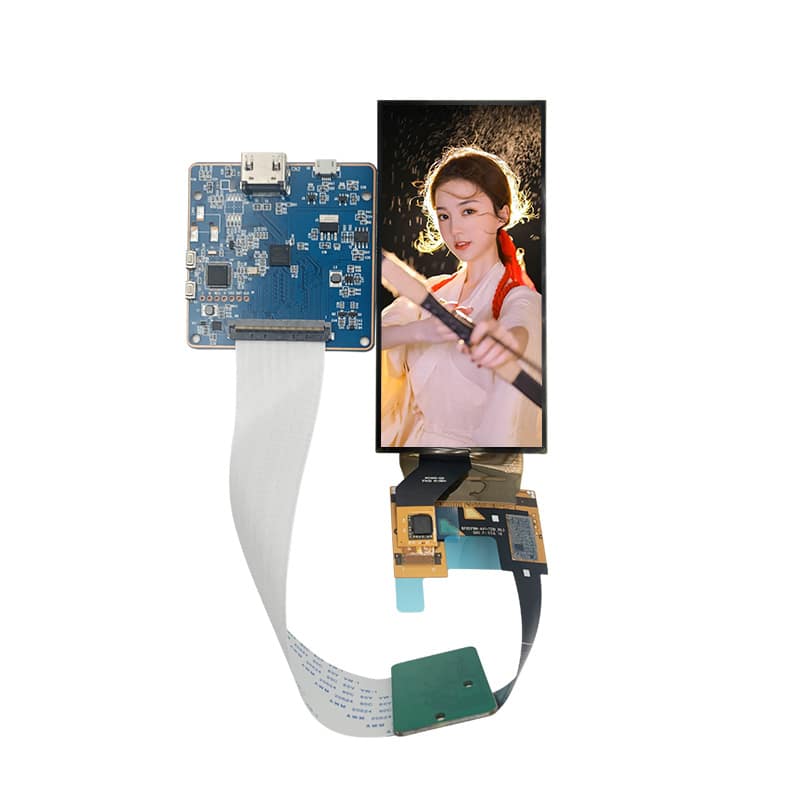In the realm of embedded systems and microcontroller applications, the i2c 1602 LCD module has emerged as a versatile and widely adopted display interface. The term “i2c” stands for Inter-Integrated Circuit, a popular communication protocol that simplifies device communication by allowing multiple devices to share a single data line. The 1602 LCD, on the other hand, refers to a 16×2 character display, capable of displaying text and simple graphics. In this article, we will delve into the world of i2c 1602 LCD modules, focusing on their functionality, implementation, and the benefits of using Chancedisplay’s brand.
**Understanding the i2c 1602 LCD Module**
At its core, an i2c 1602 lcd module consists of an LCD display, which is controlled by a driver IC that interfaces with the microcontroller through the i2c protocol. This arrangement simplifies the hardware setup, as the i2c bus requires only two wires (SDA and SCL) for communication between the master controller and the display, compared to the numerous pins required for a direct connection.
The 1602 LCD is divided into two sections: the display area, which consists of 16 rows and 2 columns, and a command/data line. The display area is further divided into a display memory and a cursor position register. The microcontroller sends commands to control the display, such as clearing the screen, setting the cursor position, and updating text or graphics.
**Hardware Setup: Connecting CHANCEDISPLAY‘s i2c 1602 LCD**
Chancedisplay offers high-quality i2c 1602 LCD modules that are designed for easy integration into your projects. To get started, you’ll need a few essential components:
1. **LCD Module**: Choose a Chancedisplay 1602 LCD module with a built-in i2C driver, like the CHD-1602-i2c.
2. **Microcontroller (e.g., Arduino Uno, Raspberry Pi)**: For this guide, we’ll use an Arduino Uno, but any compatible i2c-enabled board can be used.
3. **I2C SDA and SCL Wires**: Connect these to the microcontroller’s digital pins.
4. **Power Supply**: Provide a suitable voltage (typically 3.3V or 5V) to power the LCD module.
Here’s a step-by-step guide to connecting the Chancedisplay LCD to your Arduino Uno:
1. Connect SDA (pin 4) from the LCD to A4 on the Arduino Uno.
2. Connect SCL (pin 5) from the LCD to A5 on the Arduino Uno.
3. Connect VCC (positive power) from the LCD to the 5V pin on the Arduino Uno.
4. Connect GND (ground) from the LCD to the GND pin on the Arduino Uno.
**Software Implementation: Controlling the LCD with Chancedisplay’s Library**
To interact with the Chancedisplay i2c 1602 LCD, you’ll need to use a library that abstracts the low-level i2c communication. Chancedisplay provides a user-friendly library that simplifies the process. First, install the library by following the instructions in their documentation.
Once the library is installed, you can write the following code to initialize and control the LCD:
“`cpp
#include
#include

// Replace with your LCD address (default is 0x27)
#define LCD_ADDRESS 0x27
CHANCEDISPLAYLCD lcd(LCD_ADDRESS);
void setup() {
Serial.begin(9600);
lcd.init(); // Initialize the LCD
lcd.clearDisplay(); // Clear the screen
}
void loop() {
lcd.setCursor(0, 0); // Set cursor at the beginning of the first line
lcd.print(“Hello, World!”); // Display text
delay(2000); // Wait 2 seconds
lcd.setCursor(0, 1); // Move to the second line
lcd.print(“Welcome to Chancedisplay!”); // Display another message
delay(2000); // Wait again
}
“`
This code initializes the LCD, clears the screen, and then displays two messages, cycling through them every 2 seconds. You can modify the text and formatting according to your needs.
**Advanced Features and Customization**
The i2c 1602 LCD offers several advanced features, such as scrolling text, custom character sets, and backlight control. Chancedisplay’s library supports most of these functions, making it easy to create engaging user interfaces. Here’s a brief overview:
1. **Scrolling Text**: Use the `scrollDisplayLeft()` and `scrollDisplayRight()` functions to move the displayed text horizontally.
2. **Custom Characters**: Load custom characters into the LCD memory for unique symbols or designs.
3. **Backlight Control**: Some LCD modules come with an external backlight; you can control its state using the library.
4. **Cursor and Blinking**: Enable or disable the cursor and blinking with appropriate commands.
**Conclusion**
The i2c 1602 lcd module, with its simplicity and flexibility, is a staple in many embedded projects. Chancedisplay’s offerings provide high-quality, reliable, and well-documented solutions that streamline the development process. By understanding the hardware setup, software implementation, and leveraging the advanced features, you can harness the full potential of the i2c 1602 LCD to create engaging and informative interfaces for your projects. Happy coding!


